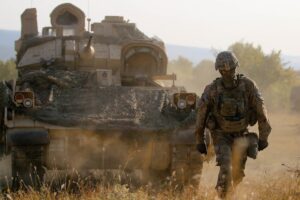The Army has released the final Request for Proposals for the next two phases of its Optionally Manned Fighting Vehicle (OMFV) competition, which covers detailed design and building and testing of prototypes.
The RFP includes plans to still award up to three contracts to participate in both Phase 3 and 4 of the Bradley replacement program, while noting selected vendors will now be required to deliver up to 11 prototype vehicles rather than the originally proposed 12 test systems.

“The overarching five-phase strategy for the OMFV program remains unchanged,” Brig. Gen. Glenn Dean, the Army’s program executive officer for ground combat systems, said in a statement. “We continue to focus on encouraging innovation, maximizing competition throughout the entire program, and producing a transformational infantry fighting vehicle that will dominate maneuver in multi-domain operations.”
Last July, the Army awarded nearly $300 million in contracts to five teams led by General Dynamics Land Systems [GD], Oshkosh Defense [OSK], BAE Systems, Rheinmetall and armor supplier Point Blank Enterprises for OMFV Phase 2 to work on refining their platform concepts over a period of 15 months (Defense Daily, July 23 2021).
OMFV Phase 3 will look to mature OMFV designs leading into a critical design review, which will then move immediately into the Phase 4 building and testing of prototypes.
The Army notes OMFV Phases 3 and 4 will include a limited user test, with vendors having delivered their prototypes as well as ballistic hulls and turrets, armor coupons and digital engineering data.
The draft RFP released in March included the designation for 12 prototypes from each vendor, to be evaluated on the design’s survivability, weight and mobility, lethality, ability to enable and optimize a two-man crew, ability to leverage modular open systems architecture and digital engineering (Defense Daily, March 1).
In response to a query from Defense Daily on the change in the number of required prototypes for Phases 3 and 4, the Army said the extra prototype would have been an engineering test vehicle to support OEM’s engineering changes during testing, which was deemed redundant for the program’s digital engineering environment.
The five teams’ work on Phase 2 is expected to be completed in December, with the draft RFP noting the Army is planning a three- to five-month break between the end of the Phase 2 contracts and the award of the Phase 3 and 4 deals.
The Army has previously reiterated that the competition for the next two phases of OMFV will not be limited to the participants in the current concept refinement effort.
After Phases 3 and 4, the Army plans to hold a “limited competition” to select one vendor for OMFV production in late FY ‘27, with plans to meet a first unit equipped goal in FY ‘29.